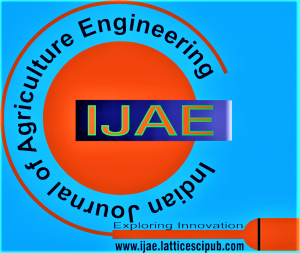Development and Calibration of Automated Multiple-Ring Infiltrometer
Olotu Y.1, Rodiya2, Evboifo N.O.3
1Olotu Y, Department of Agricultural & Bio-Environmental Engineering, Auchi Polytechnic, Auchi, Nigeria.
2Rodiya, Department of Agricultural & Bio-Envi. Engineering, The Federal Polytechnic, Ado-Ekiti, Nigeria.
3Evboifo N.O., Department of Agricultural Technology, Auchi Polytechnic, Auchi, Nigeria.
Manuscript received on 25 April 2021 | Revised Manuscript received on 28 April 2021 | Manuscript Accepted on 15 May 2021 | Manuscript published on 30 May 2021 | PP: 20-24 | Volume-1 Issue-1, May 2021. | Retrieval Number:100.1/ijae.A1505051121
Open Access | Ethics and Policies | Indexing and Abstracting
© The Authors. Published by Lattice Science Publication (LSP). This is an open-access article under the CC-BY-NC-ND license (http://creativecommons.org/licenses/by-nc-nd/4.0/)
Abstract: An automatic triple-ring infiltrometer was developed using a set of pre-set sensors and transducer (AP 403, AP 404, AP 405 and AP 406, RAPOO1 and RAPO02). The aluminum probe sensors were graduated and arranged in series to monitor the rate at which water is infiltrating into the soil layer. The working principle of automatic triple-ring infiltrometer was developed using six probes with depth calibration of 1.0mm, 26.7 mm, 12.4 mm, and 12.7 mm, respectively. The result obtained showed strong agreement with a coefficient of determination R?= 0.963, indicating positive proportionality between cumulative infiltration and time taken for the water to infiltrate at different depths. The instrument has a measuring accuracy of + 0.3mm infiltration depth. The device works effectively under biochar amended soil and other soil formations with high precision. Accurate infiltration data generated by the instrument would be applied to estimate the depth of water available to plant and predict possible agricultural drought.
Keywords: Triple-Ring Infiltrometer, Probe Sensor, Soil Layer, Calibration, Accuracy.
